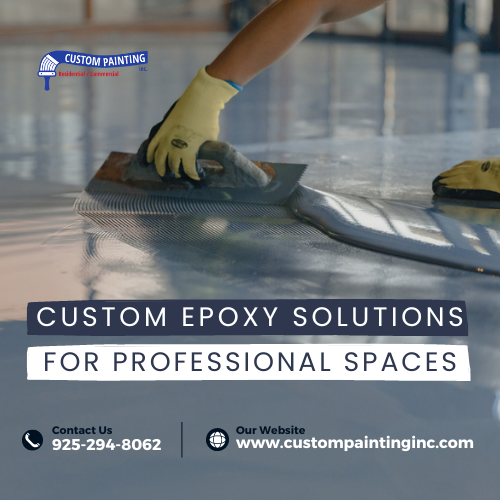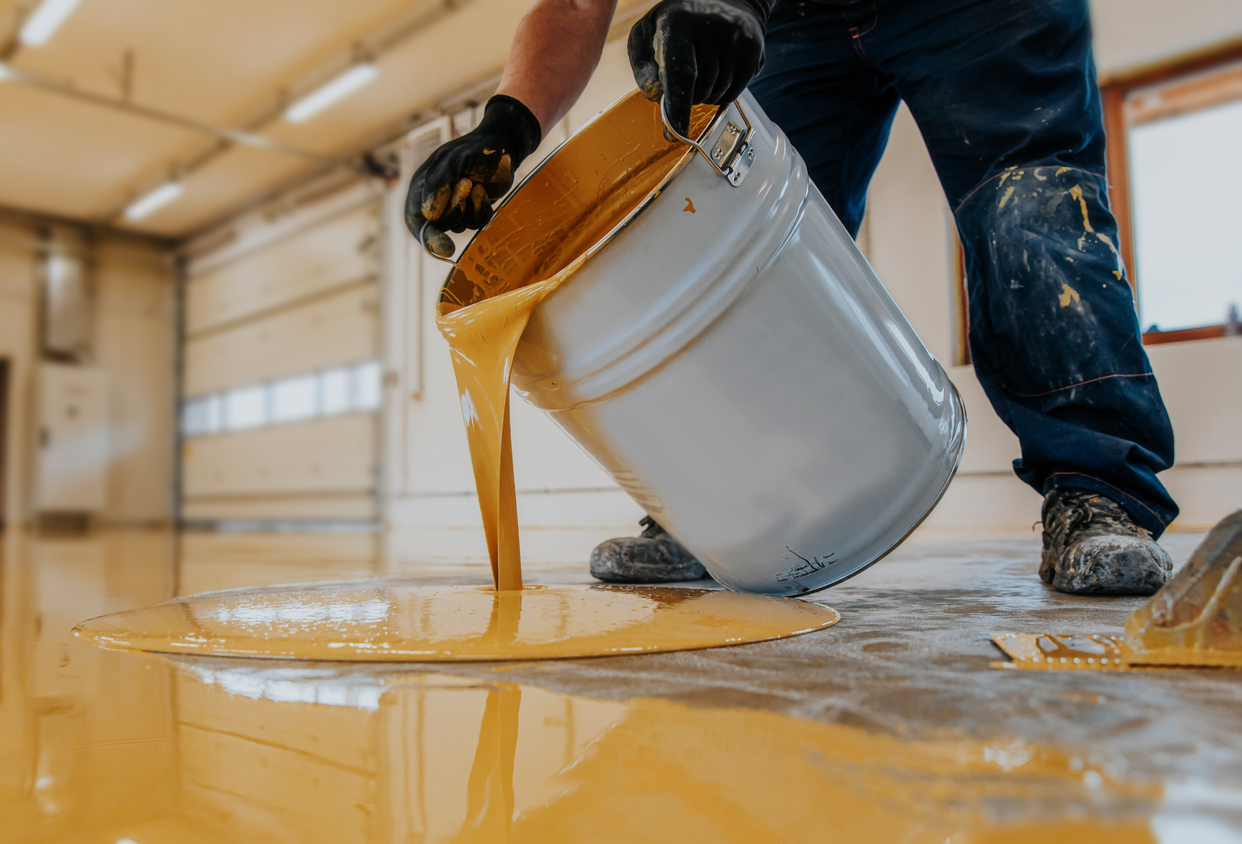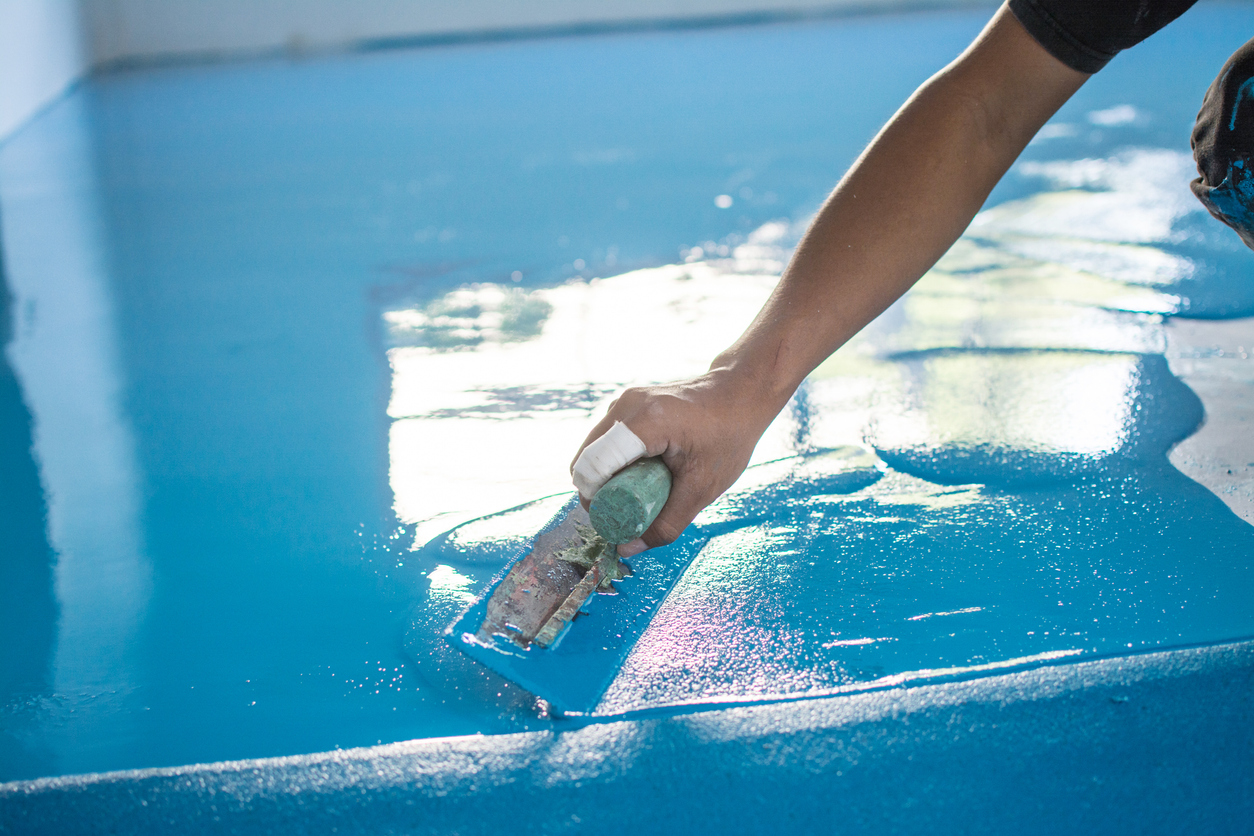Custom epoxy solutions are among the popular choices for flooring and other surfaces in Pleasanton, CA area commercial spaces because they are durable and versatile. Epoxy cures when mixed with a hardening agent that leads to a hard, plastic-like surface. It can have different colors and patterns, making it an ideal choice for floors, countertops, and other surfaces in different professional settings.
In this article, we’ll explore how customized epoxy flooring applications can transform commercial spaces. Let us find out how it offers a combination of practicality and sleek design in different businesses.
Benefits of Epoxy Coatings
Epoxy coatings are highly popular in professional environments for their advantages. Here are some of them:
Durability and Resistance
Epoxy coatings are perfect for heavy foot traffic, industrial machinery, and daily operations. These make them an ideal choice for places that demand resilience. It is also resistant to a wide range of chemicals, making it a top choice in laboratories and manufacturing plants where spills and exposure to harsh substances are common. Its waterproof surface also resists stains, helping maintain the appearance of floors and countertops without extensive maintenance.
Aesthetics
There are different epoxy finishes and colors to choose from for different needs. This versatility enhances the decor and also contributes to creating an environment that reflects a company’s identity and values.
Safety and Hygiene
Epoxy coatings are perfect for industries like healthcare and food service because they require safety and hygiene. This type of surface helps create safe and non-slip surfaces, reducing the risk of accidents in wet or oily conditions. The smooth nature of epoxy floors also leaves no room for bacteria and mold to grow. This makes it an excellent choice for areas that need sterile conditions, such as hospitals, clinics, and commercial kitchens.
Maintenance
Epoxy coatings are easy to clean and maintain. Its non-porous surface makes it easy to wipe away spills, and it prevents dirt and liquids from penetrating. Regular maintenance of epoxy coatings only needs standard cleaning using mild detergents. This helps save time and reduce the cost needed compared to caring for other types of surfaces. This aspect makes epoxy an economical choice for professional environments.
Types of Epoxy Coatings
There are different types of epoxy coatings to choose from for different applications. Here are some of them:
1. Self-Leveling Epoxy
This type of epoxy coating is used to create smooth and seamless surfaces on both new and old concrete floors. It is applied in a liquid form and levels itself to form a flat, uniform surface without brush marks or ridges. It is beneficial in commercial and industrial spaces where a clean, level floor is needed for operational efficiency and overall appearance. It’s also chosen to cover up cracks and imperfections for enhanced functionality.
2. Epoxy Mortar Systems
Epoxy mortar systems are the top choice for environments that require durable surfaces. It is a combination of high-grade epoxy resin and finely ground sand, which makes it extremely tough and impact-resistant. They are especially suited to heavy-duty industrial settings where floors such as manufacturing plants, garages, and warehouses need to withstand significant wear and tear. This type of coating is also often used for repairing cracks and chips in floors, making it both a protective and restorative solution.
3. Anti-Static Epoxy (ESD)
Anti-static epoxy, or Electrostatic Dissipative (ESD) epoxy, is essential for environments where static control is critical. These include commercial spaces like electronics manufacturing, data centers, and areas handling flammable materials. This specialized coating helps safely dissipate static electricity to protect sensitive electronic equipment from static shocks and reduce the risk of explosions or fires in volatile environments. ESD epoxy can also be integrated into the design of the space to maintain aesthetics without compromising safety.
4. Flake Epoxy Coatings
Flake epoxy coatings are known for their decorative appeal and slight texture. These coatings include colored flake materials distributed throughout the epoxy to create vibrant, multi-hued surfaces. The flakes also provide a texture that can help with slip resistance. Flake epoxy is popular in public spaces, showrooms, and commercial establishments that need an attractive floor that stands out while providing durability and safety.
Considerations for Selecting the Right Epoxy Solution
Here are some critical considerations to guide you in selecting the ideal epoxy coating for your professional space:
Assessing the Environment
Where and how the epoxy will be used is important when it comes to knowing the type of coating. Here are the things you need to consider:
- Traffic: The amount of foot or vehicular traffic will influence the choice of epoxy. High-traffic areas require durable, hard-wearing epoxy systems like mortar or self-leveling types to withstand constant use.
- Exposure to Chemicals: In environments where chemical spills are common, such as laboratories or manufacturing plants, chemical-resistant epoxy is essential to prevent corrosion and degradation of the floor surface.
- Aesthetic Needs: Decorative epoxies, like flake systems, offer beauty and durability for spaces where appearance is important, such as showrooms or retail spaces.
Assessing these factors ensures that the selected epoxy not only meets functional requirements but also complements the design and usage of the space.
Compliance and Regulations
Different industries have specific flooring regulations, particularly regarding safety and environmental impact. For instance:
- Healthcare and Food Services: These sectors often require floors that are resistant to pathogens and easy to sanitize, necessitating seamless and hygienic epoxy solutions.
- Manufacturing and Warehousing: Such settings might need floors that are resistant to heavy machinery and chemical spills, complying with safety standards that prevent workplace accidents.
Ensuring that the chosen epoxy meets these regulatory requirements is essential for legal compliance and the safety of those who use the space.
Budgeting
Financial considerations are crucial in selecting an epoxy solution. It’s important to consider both upfront costs and long-term value:
- Installation Costs: Different types of epoxies have varying prices based on their composition and the complexity of installation. For example, high-performance systems like ESD or mortar might have a higher initial cost.
- Maintenance Costs: While epoxy flooring is generally low maintenance, the type chosen can affect long-term upkeep costs. Easier to clean and more durable options offer savings over time, offsetting initial expenses.
Balancing these cost factors with the benefits each type of epoxy offers will help make an informed decision that ensures both functional efficacy and cost-effectiveness.
Designing Custom Epoxy Floors
Custom epoxy floors offer limitless possibilities for enhancing the aesthetics and functionality of a space. When designing such floors, it’s important to consider how aspects like color, patterns, and additional markings can be utilized to meet specific needs and preferences. Here’s a closer look at key elements in the design process:
Color and Pattern Options
Here are a few tips for choosing the right colors and patterns for an epoxy floor:
- Align with Brand Identity: Colors can be chosen to reflect a company’s branding, creating a consistent and immersive environment. This can be particularly effective in spaces like showrooms or customer-facing areas.
- Functional Needs: Colors can be used to characterize different areas or signify safety zones in more functional spaces like factories or hospitals. For example, bright colors can highlight hazards or traffic pathways.
- Patterns and Effects: Epoxy allows for various patterns, such as geometric designs or natural stone effects, which can be used to add visual interest or mimic more expensive materials.
The choice of colors and patterns should serve both the intended look and the functional requirements of the space.
Logos and Markings
Epoxy floors can be customized further with the addition of logos and markings. This helps enhance the visual appeal and also serves practical purposes:
- Company Logos: Embedding a company logo on the floor can strengthen brand identity and leave a lasting impression on visitors.
- Safety Markings and Directional Signs: Epoxy floors can incorporate important signage directly into the flooring, such as fire exit routes, safety warnings, or traffic directions. This is especially useful in environments where visibility and compliance with safety standards are crucial.
These markings can be added during the epoxy mixing and application process to make sure that they are durable and permanent.
Reflectivity and Lighting
Reflective epoxy floors can significantly impact the brightness and ambiance of an interior space. Consider these aspects:
- Enhancing Interior Brightness: High-gloss epoxy finishes can reflect indoor lighting, enhancing the overall brightness of a room. This is particularly beneficial in spaces without ample natural light.
- Energy Savings: By increasing light reflectivity, less artificial lighting is needed, which can help reduce energy costs.
- Aesthetic and Space Perception: A reflective floor can make a space appear larger and more open, contributing positively to the environment’s overall feel.
Selecting the right gloss and color level can maximize epoxy’s reflective properties, contributing to both aesthetic appeal and functional improvements in lighting efficiency. By thoughtfully designing custom epoxy floors, organizations can create spaces that are not only visually appealing but also enhance the operational efficiency and safety of their environments.
Installation Process
Proper installation is critical to ensuring that epoxy flooring performs as expected. Here’s a breakdown of each stage:
Surface Preparation
Proper surface preparation is essential to achieve optimal adhesion of the epoxy coating. The steps involved include:
- Cleaning: The substrate must be thoroughly cleaned to remove oils, dirt, grease, and any existing coatings. This often involves mechanical means such as shot blasting or diamond grinding.
- Repairing: Any cracks, chips, or uneven areas should be repaired and smoothed out to ensure a uniform surface that will not cause imperfections in the epoxy layer.
- Profiling: The concrete surface needs to be slightly porous to hold the epoxy better. This is typically achieved through acid etching or more mechanical methods like sandblasting.
- Drying: The substrate must be completely dry before application. Any moisture present can cause the epoxy to bubble and peel.
Application Techniques
Applying epoxy needs precision and expertise to achieve a smooth and even finish. Key techniques include:
- Mixing: To ensure proper chemical bonding and hardening, epoxy components must be mixed thoroughly according to manufacturer specifications.
- Applying: Using tools like squeegees, rollers, or sprayers, the epoxy should be applied evenly across the surface. For self-leveling epoxy, it is essential to spread the mixture quickly before it begins to set.
- Layering: Depending on the type of epoxy and the desired thickness, multiple layers may be necessary, with each layer needing to be partially but not completely cured before the next is applied.
Curing Time
The curing process is important to achieve a hard, durable surface. Key considerations include:
- Curing Phases: Epoxy flooring undergoes several stages as it cures, transitioning from a liquid to a tacky, gel-like stage and finally to a solid. Each stage has specific characteristics and timeframes.
- Temperature and Humidity: Environmental factors like temperature and humidity can affect the curing time. Ideal conditions should be maintained as recommended by the epoxy manufacturer.
- Downtime: Planning for downtime is crucial, as the floor must remain unused throughout the curing process to avoid imperfections or damage. Depending on the epoxy type and environmental conditions, this period can range from 24 hours for light traffic to several days for full curing.
Understanding and carefully managing each step of the installation process ensures that the epoxy flooring will be correctly applied, resulting in a superior finish that is both functional and visually appealing.
Conclusion
Custom epoxy solutions are among the best options when it comes to enhancing professional spaces in the Bay area including the cities of Livermore, Dublin, San Ramon, Fremont, Sunol, and Tracy. They provide durability, aesthetics, and maintenance ease. Whether you’re considering epoxy for its practical benefits or its visual appeal, the right preparation, application, and curing practices are essential for optimal results.
If you are thinking of enhancing your commercial space with custom epoxy flooring, we are here to help you. Contact us at Custom Painting, Inc. by calling 925-294-8062 or by filling out our online contact form to get started on your project. Let us help you create strong surfaces for your business that meet all your needs and exceed your expectations.



